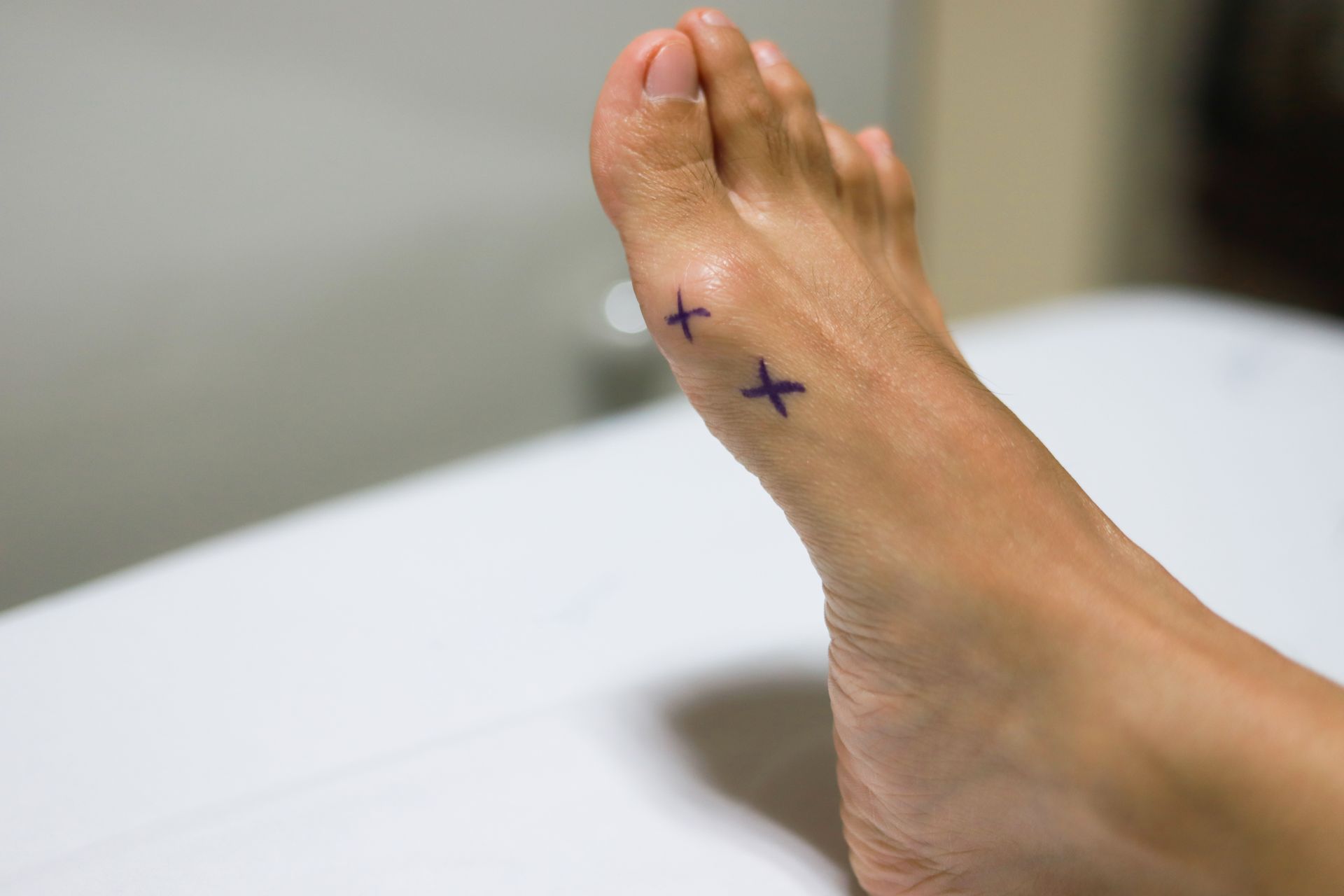Ankle Arthroscopy for Baton Rouge: Understanding the Procedure
Conditions and injuries affecting the ankle are among the most commonly reported, with 75 percent of all Americans experiencing a foot or ankle problem at some point in their lives. In many cases, these problems are resolved easily and simply. However, there are other instances in which greater levels of treatment may be required, including ankle arthroscopy.
What is an Ankle Arthroscopy?
Arthroscopy is a minimally invasive surgical procedure, meaning that rather than one or two large incisions, only two small incisions (often half a centimeter) are placed on the front of the ankle. Arthro- means joint and scope refers the instrumentation used, so the procedure quite literally involves guiding a scope into the ankle joint, which is the space between the ankle’s three bones: the tibia, fibula, and talus. Once the scope, a small camera (between 2 to 4 mm in diameter), is in place, small shavers and burs are used to clean and repair scar tissue and other defects inside the joint.
What are the Indications for Ankle Arthroscopy?
Ankle arthroscopy is a useful surgical procedure for foot
and ankle surgeons. Some of the most common indications include:
- Synovitis
- Inflammation of the protective lining around the ankle joint. Repetitive
injury can cause impingement and damage to this lining, usually along the front
of the ankle joint. This inflamed tissue can be carefully cleaned or removed
during arthroscopy.
- Bone
Spurs
- Lumps or protrusions of bone. A bone spur can be posttraumatic or
congenital. Depending on the location of a spur, it can be removed with a
minimally invasive arthroscopy. Removing a bone spur can reduce pressure on
that area and increase range of motion through a joint.
- Defects
in the Cartilage (Osteochondritis)
– Defects in the cartilage of the ankle
joint (osteochondritis or OCD lesion) usually occur following an injury like a
severe sprain or a fracture. These defects can be small dents in the cartilage
or even a loose chip or piece of cartilage in the ankle joint. Ankle
arthroscopy has shown good results with repairing these lesions through
debridement and microfracture, when appropriate. Microfracture is when tiny
holes are drilled into the cartilage defect to stimulate healing.
Who is a Good Candidate for Ankle Arthroscopy?
Most of the time, the conditions mentioned above are successfully treated without the need for surgery. Immediately following an injury, appropriate rest, ice, immobilization, compression and elevation (RIICE) are helpful. Additional treatment may be necessary in the form of immobilization in walking boot or brace, medications, and rehabilitation through skilled physical therapy. Routine x-rays and specialized MRI scans aid the diagnosis of synovitis, bone spurs and cartilage defects. If painful symptoms and functional limitations persist after appropriate, conservative treatment, then a patient may be deemed a good candidate for arthroscopy.
What are the Benefits of Ankle Arthroscopy?
Performing a surgery through smaller incisions reduces swelling, pain and rates of infection. In many instances, overall healing time is reduced from months to weeks compared to traditional open surgeries. Because the camera image used in arthroscopy can be magnified, surgical visualization is often improved with ankle arthroscopy compared to open surgical procedures.
If you are suffering from a symptomatic ankle condition, contact Baton Rouge foot and ankle specialist , Dr. Patrick Hall , and request an appointment for complete evaluation and recommended treatment options.


